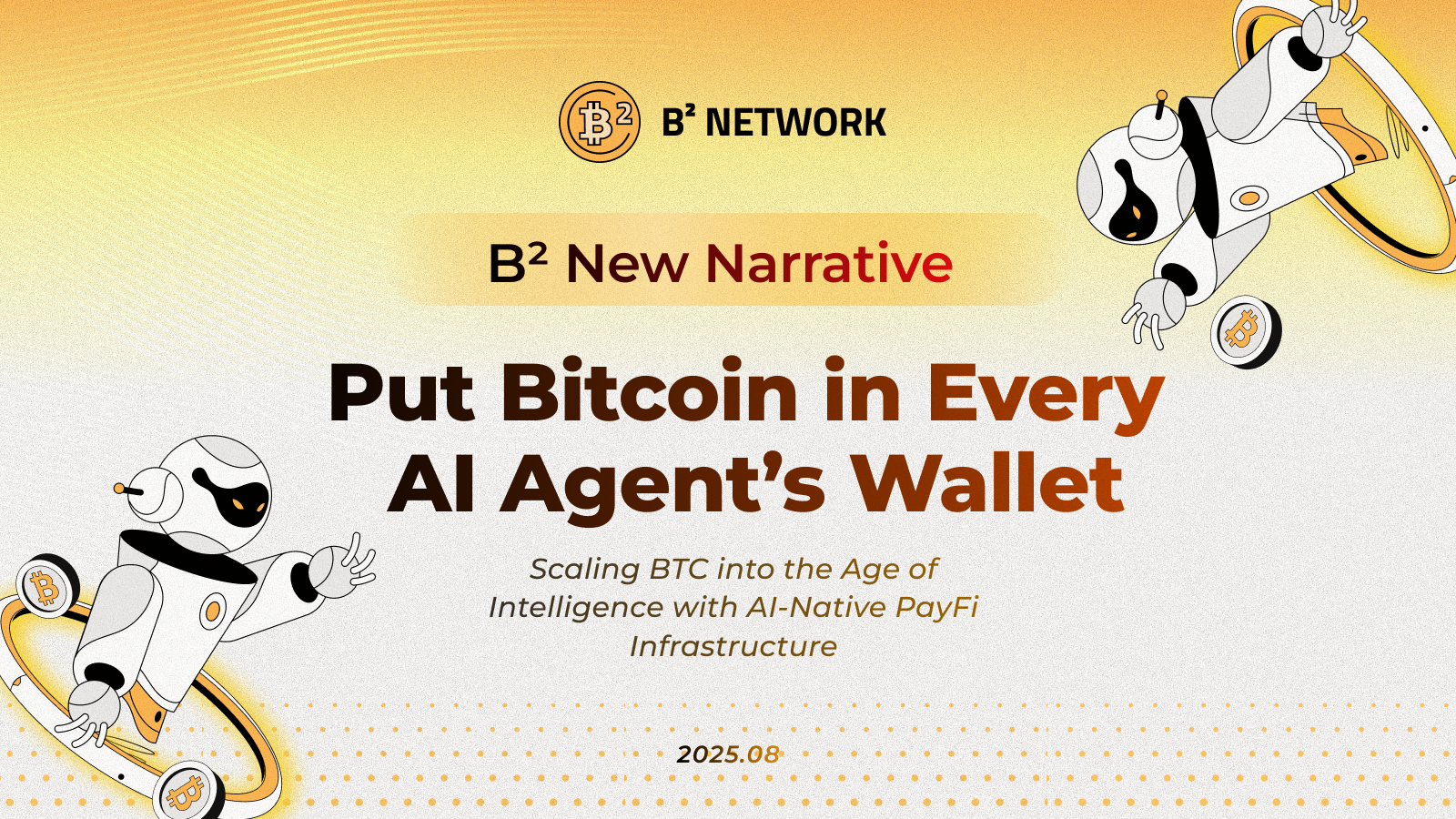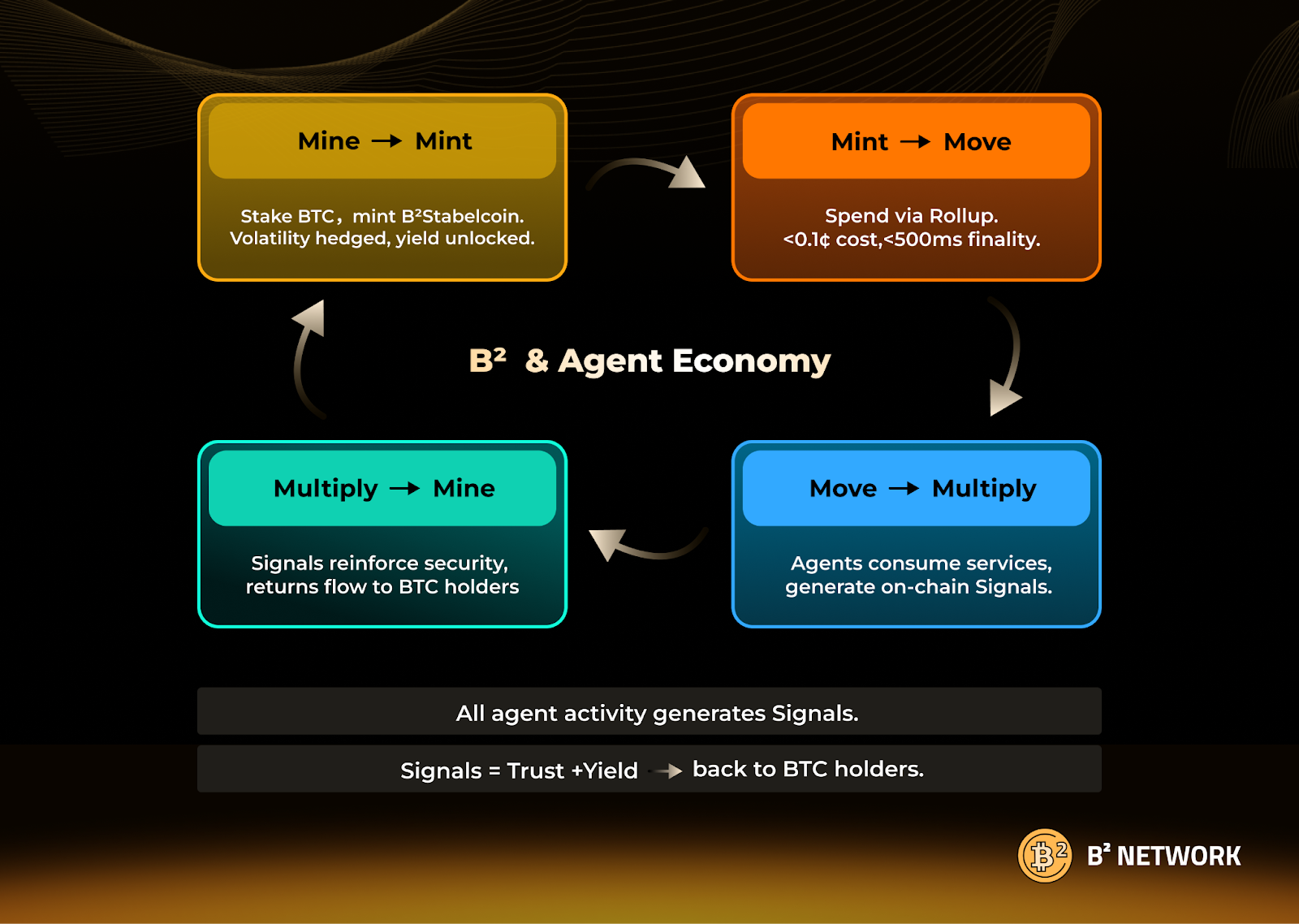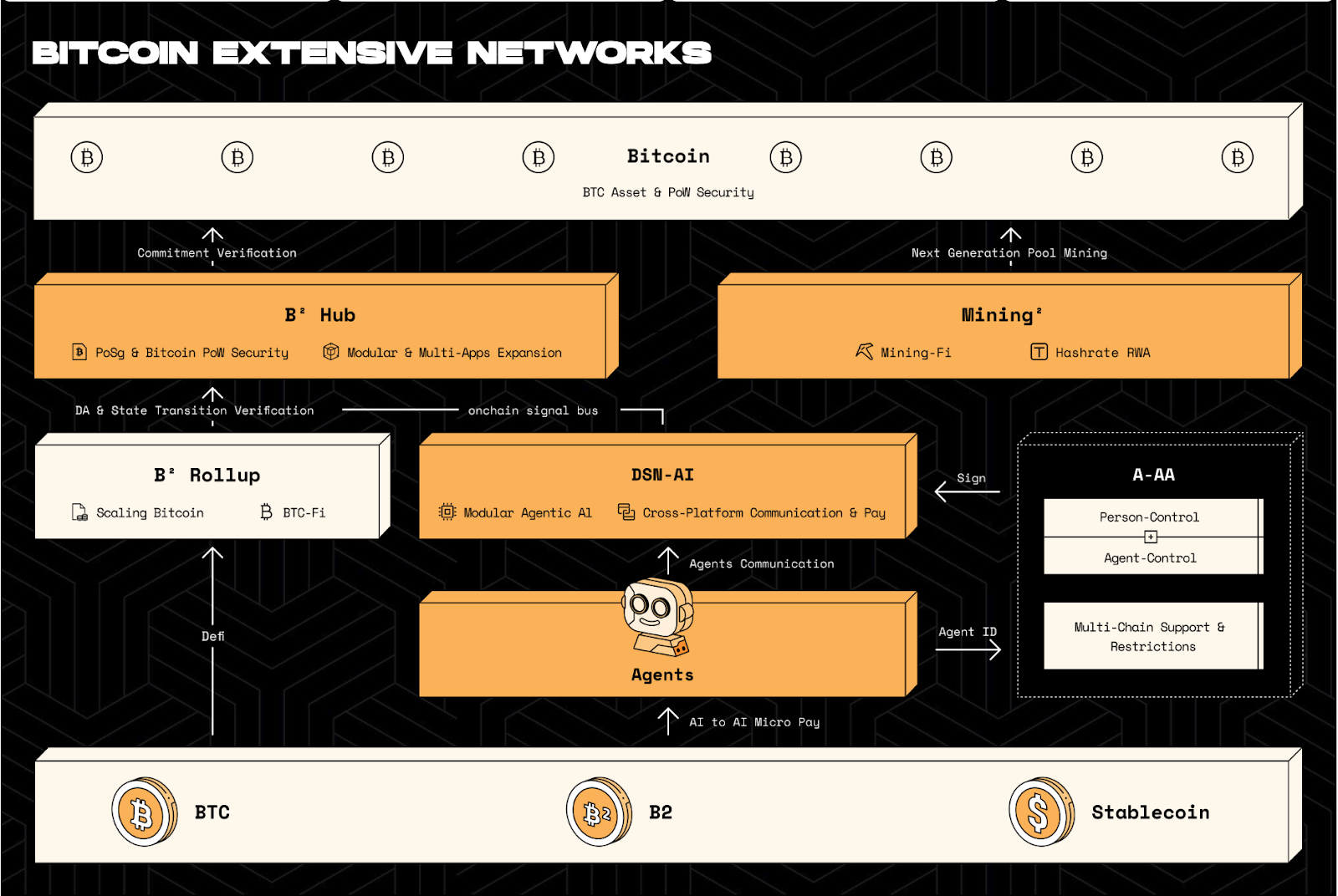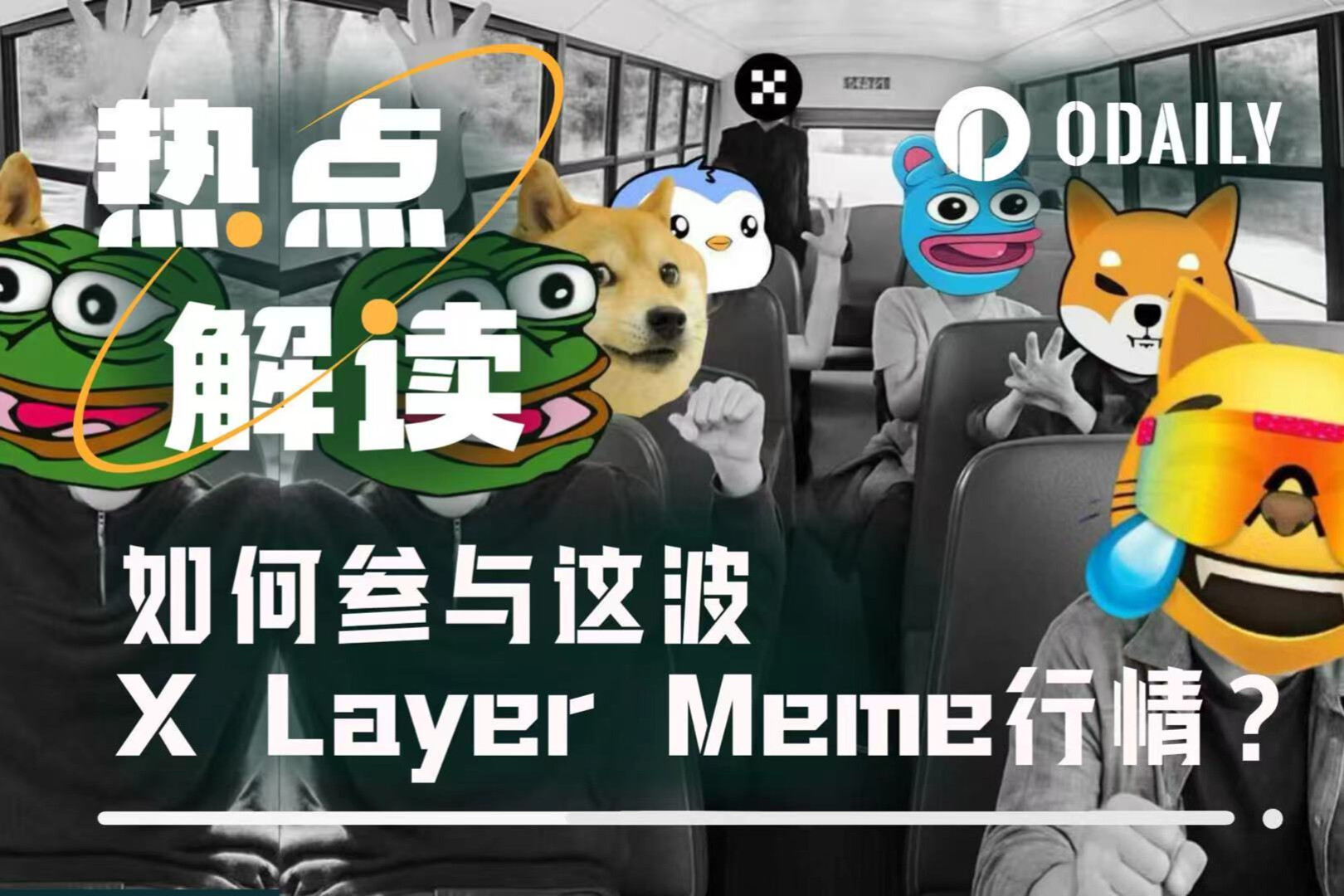
Bitcoin is the world's scarcest, most secure, and most immutable digital asset. However, today's crypto world remains limited. The total market capitalization ($4.2 trillion) is even less than NVIDIA's ($4.39 trillion) . Even during a bull market, the total crypto market capitalization is only equivalent to approximately 3% of the global economy. 98% of human economic activity is still settled through banks and credit card networks.
This means that even if you hold BTC, it's difficult to participate in the real-world economy. Today, an AI imaging analysis company in Seoul can only top up its platform account via cross-border bank remittances, then use the credit in hundreds. This is not only slow and expensive, but also wastes a large amount of idle funds.
What if BTC can directly support this high-frequency, micro-amount, cross-border, automated settlement scenario?
Imagine that this AI image analysis company in Seoul only needs to call the image recognition model deployed in San Francisco in a few seconds, each call is worth only $0.01, and it can be executed hundreds of thousands of times a day.
This can be achieved through the on-chain AI Agents economy.
1. Settlement bottleneck of AI economy: Why must Agents be on-chain?
The rise of AI agents is reshaping economic interactions. By 2030, AI agents will unlock over $15 trillion in new GDP . Forbes predicts they will generate $40-50 billion in revenue and trillions of dollars in transaction volume annually.
Assuming that 30% of the AI economy (≈ $4.7 trillion per year) is settled on-chain, it is close to the scale of Bitcoin's on-chain settlement in 2024. And this is just the starting point.
What are the advantages of AI economic chain settlement?
- Real-time settlement: The algorithm cannot wait for T+2, and on-chain second-level settlement is more reasonable;
- Cross-border frictionless: Agents can be deployed anywhere in the world, and settlement must be in a naturally cross-border currency;
- Milli-centimeter billing: API calls, model usage, and data services are all paid for with satoshi-level micropayments. Account-based pricing is not supported.
The essence of AI trading is "high frequency, low volume, and fully automated." A single model call might be worth only a few cents, but it can be processed dozens of times a day. Human payment systems simply cannot handle this level of interaction density. Traditional Rails charges a $0.25 per transaction fee, which is insufficient for API payments or data fragment billing in units of $0.0001. In contrast, blockchain's native "satoshi-level settlement + permissionless access" is the most suitable underlying clearing and settlement infrastructure.
In other words, the efficiency of the AI economy will greatly benefit from on-chain settlement. Migrating just 30–40% of AI-to-AI transactions to on-chain could potentially increase the total volume of on-chain settlement to 5–10 times its current size.
B² Network has always existed to expand the utility of Bitcoin. At the intersection of the AI Agent economy and on-chain settlement, B² Network will transform Bitcoin from a "global reserve asset" to a "unit of settlement between global agents." AI-to-AI transactions will be fueled by Bitcoin and completed transaction by transaction between agents, leveraging the on-chain settlement infrastructure provided by B² Network.
2. Why B²: Building the Infrastructure of the AI Economy with BTC
A BTC-powered AI Agents settlement network isn't just a distant fantasy, but rather an extension of B²'s proven path. Over the past year, B² Network has completed its infrastructure and economic system deployments. Next, the company will release its AI collaboration layer to foster a three-tiered AI-to-AI on-chain settlement system:
- The infrastructure layer (B² Rollup + B² Hub) provides high-concurrency processing capabilities and consensus mechanisms for the intelligent economy: B² launched the high-performance B² Rollup (execution layer) and B² Hub (consensus + data availability layer), realizing the programmability and cross-chain interoperability of BTC assets, and introducing Bitcoin PoW security by submitting commitments to the Bitcoin mainnet.
- The economic layer uses AI to drive optimal BTC yield strategies and introduces stablecoins to support liquidity for the on-chain AI Agent economy. B² has launched the BTC-Fi aggregation platform Buzz, the ecosystem incentive platform Honey, and the next-generation mining pool Mining², creating a gateway to diverse yield strategies for BTC holders and miners. Furthermore, B² will soon launch a BTC-native stablecoin solution as a liquidity engine for inter-AI transactions, supporting the high stability and strong liquidity required for Agent payments.
- The AI layer enables on-chain communication and collaboration for AI Agents: B² is about to release the Decentralized Signal-Driven Agentic AI (DSN-AI) protocol, an on-chain infrastructure designed specifically for multi-agent collaboration. This protocol will support AI division of labor, native on-chain integration, and auditable tracking. Every AI service request, model call, and task feedback will be encapsulated as a signal and uploaded to the chain, becoming part of the consensus mechanism.
All of this points to a clearer future: Agents will be able to instantly open micropayment channels, request model services, call interfaces, share solutions, and complete economic activities such as real-time payments on the chain.
In this system, BTC will not only serve as a store of value, but also ensure the security and consensus of the AI economy on-chain, while generating stable and secure returns and boosting liquidity to promote the complete cycle of "Mine → Mint → Move → Multiply":
- Starting from the BTC mainnet, users can lock up and stake BTC to obtain stable income through the Mining² mining mechanism, while minting B² stablecoins (Mine → Mint);
- Stablecoins can be used to pay for data, call models, or rent computing power, and achieve high-speed settlement of <500 ms (Mint → Move) through Lightning and Rollup networks;
- These calls and expenditures for AI Agents are ultimately based on on-chain service consumption and task completion, feeding back into the BTC system and flowing back to miners and staking users (Move → Multiply).

This three-layer architecture not only provides the foundational capabilities for AI-to-AI settlement but also forms the basis for the on-chain economic infrastructure for AI Agents based on Bitcoin, created by B² Network. Next, B² Network will break this system down into four core modules and examine how each plays a role in the daily on-chain economy.
III. B² Network AI Agents On-Chain Economy: Four Major Technical Modules

1. Mining²: Enabling miners to become participants and beneficiaries of the on-chain economy
As shown in the figure below, starting from the Bitcoin mainnet, B² Network's AI Agents on-chain economic operating system, through B² Network's four major modules: Mining², Rollup, Hub, and DSN-AI, ultimately realizes the intelligent collaboration of AI Agents. This is a complete on-chain operating system for the AI era, securely supported by BTC.
In the past, miners’ roles were limited to “maintaining Bitcoin network security.” However, B² Network enables them to become active participants and beneficiaries of the on-chain economy.
- Mining-Fi income structure: miners connect their computing power to Mining², not only to obtain their own mining income, but also to access on-chain strategy pools (DeFi, RWA, stablecoins) with one click, so that the mined BTC can directly generate interest. The process is simple, the threshold is low, and it is suitable for all miners.
- Hashrate RWA: B² is promoting the on-chain assetization of hashrate (RWA), mapping actual block production capacity to on-chain credentials. This allows hashrate to not only generate BTC but also function as a verifiable asset for staking, lending, and governance, transforming mining capacity into a tradable “credit line.”
- Intelligent Strategy (DeFAI) driven: The decentralized AI strategy manager will automatically select the optimal profit path for users.
Here, miners, for the first time, have a positive cycle of "production → revenue → reallocation." Mining pools will become the starting point of the AI Agents on-chain economy.
2. B² Rollup: A Public Chain Best Suited for On-Chain Economic Operations of AI Agents
To free on-chain interactions from the performance bottlenecks of Bitcoin mainnet, B² Network has built a highly optimized Layer 2 execution environment, B² Rollup. B² Rollup features EVM compatibility, developer-friendliness, ultra-low gas usage, PoW-level security, and native support for BTC-Fi . B² Rollup supports a variety of BTC-based interest-earning strategies, including liquidity aggregation, decentralized staking, and stablecoin minting. Developers can easily integrate BTC financial modules to build new products. It will lay the foundation for efficient and programmable execution for a wider range of on-chain scenarios.
3. B² Hub: Building an on-chain trust mechanism for AI Agents
The B² Hub, previously the data availability layer for Bitcoin, now has been upgraded to transform on-chain AI Agent events into quantifiable and verifiable transmission signals. Therefore, the B² Network not only brings the AI Agent economy to the blockchain but also empowers AI Agents with greater responsibility—governance and decision-making—to foster a healthy on-chain AI Agent economy.
- Signal as Contribution makes interactions between AIs traceable: Through the Signal Layer, every AI Agent's call request, response, model collaboration, and other events are encapsulated into a signal with explicit cryptographic proof and payment records. These signals are written to the B² Hub's dedicated Application Shard and, after authentication and confirmation, become measurable contributions that directly influence PoSg weight distribution.
- The Proof of Signal + Stake (PoSg) consensus mechanism transforms AI activity into a network security model: validators' weight is no longer determined solely by their stake, but rather by the Signal score generated by the agents they serve. Specifically, the more active and valuable agents are, the more voting power they receive and the greater their probability of producing a block.
- An AI-driven governance framework ensures sustainable operation: An off-chain AI decision-making mechanism is introduced to automatically monitor indicators such as signal density, risk of score manipulation, and network congestion. Consensus parameters (α/β, signaling fees, slashing ratio, etc.) are dynamically adjusted. XAI automatically generates governance proposal summaries, which are then uploaded to the blockchain for PoS voting and execution. This achieves highly resilient security management driven by the dual-wheel combination of "AI decision-making + human governance."
Therefore, B² Hub creates a closed loop of validator incentives:
- More active agents → more signals → higher security budget;
- Validators provide high-value signals → increasing the probability of block generation;
- Improved security → Attract more Agents to join.
Therefore, B² Hub has laid a solid foundation for the economic health and sustainable ecology of on-chain AI Agents by building an AI Agents governance and decision-making mechanism.
4. DSN-AI: Providing a native chain operating environment for intelligent agents
The final step is to build an on-chain working system for AI agents. This is the core mission of DSN-AI (Decentralized Signal Network for AI). DSN-AI is an operating system that enables AI agents to collaborate with each other and converts their work into verifiable on-chain signals. Its features are as follows:
- Signal-Driven Backbone Mechanism: Every model call, task completion, and data annotation is standardized into a verifiable Signal. Once on-chain, Signal receives PoSg security endorsement and economic feedback, ensuring that every Agent's work has "on-chain proof."
- A-AA (Agent-Native Account Abstraction) wallet system: provides Agents with native account abstraction functions such as multi-signature, social recovery, and permission grading. Agents can hold BTC/B2/stablecoins independently, initiate payments and manage authorizations independently, and support high-frequency small-amount interactions.
- Model and task scheduling capabilities: Integrating the sparse activation mechanism and MoE (Mixture of Experts) scheduling system, Agents can call local models, third-party plug-ins, or off-chain large model APIs on demand, and automatically route the optimal path based on the task type.
- Cross-platform intelligent collaborative network: supports interoperability between different chains, different platforms and privately deployed Agents, creating a truly global on-chain AI Internet network.
Here, AI Agents can not only "speak" but also "earn money." They exchange work for income and signals for trust, forming high-density, high-frequency, and high-value economic activities on the B² Network.
At this point, B² Network has completed a complete chain covering the economic production, execution, verification and interaction of AI Agents on the chain: Mining² generates computing power and BTC → Rollup provides low-cost execution → Hub verifies behavior contribution → DSN-AI completes Agent collaboration → B² stablecoin settlement returns → reactivates Mining²'s BTC liquidity.
This is not only a reconstruction of the system architecture, but also a redefinition of Bitcoin's economic capabilities. And B² Network is connecting all of this.
IV. From Architecture to Implementation: B² Brings a Vision to the Future of AI
In the smart economic system built by B², every role has been given new meaning: BTC holders no longer just store value, but truly participate in payments; AI developers no longer need to worry about cross-border settlement and on-chain deployment, but instead gain access to payment infrastructure built specifically for Agents; enterprises can use stable, compliant, and value-added assets to manage global liquidity, maintaining the real-time and low-cost nature of cross-border funds on-chain while complying with the transparency requirements of mainstream regulations such as custody and auditing; and miners are also beginning to participate in the on-chain economy and reap benefits.
It is the real participation of these different roles that constitutes the daily life of B² Network :
Early in the morning, a South Korean fintech company minted the B² stablecoin using ten Bitcoins as collateral. Within minutes, a cross-border payment was completed, used to settle fees for OpenAI's compliance model. Simultaneously, the collateral was automatically invested in the Buzz strategy pool, where a compounding cycle of mining and re-staking began without user intervention, generating daily on-chain returns denominated in BTC for holders. Later that afternoon, another agent detected that the LTV (Lost Value) was approaching a threshold and autonomously executed repayment logic, without any manual intervention or user attention. That evening, a blockchain game instantly distributed rewards to players' wallets within seconds, eliminating settlement cycles and expensive fees, seamlessly integrating payments and gameplay. Late at night, validators adjusted parameter weights based on signals from the agents that day, and the B² Hub automatically generated proposals and awaited consensus votes. Within these invisible on-chain layers, Rollups and data shards operated reliably, ensuring the security and certainty of every interaction. Humans are resting, AI Agents are running, and Bitcoin is quietly releasing its new vitality.
The blueprint for BTC is gradually being implemented. In Q3, B² Network will launch two key products:
- B² AI Agents Platform: You will see the collaboration and division of labor between AI Agents, all happening on-chain;
- B² Stablecoin System: A stablecoin system collateralized by BTC and pegged to the US dollar. You will see BTC flowing freely in the on-chain economy of AI Agents.
References
For a deeper understanding of B² Network's on-chain settlement design and technical details for the AI-to-AI economy, please read the latest B² Network white paper . This document details B² Network's three-layer architecture, PoSg consensus mechanism, U2 stablecoin design, and how BTC will become the settlement infrastructure for the AI economy.
- 核心观点:BTC将成为AI经济链上结算的核心资产。
- 关键要素:
- AI经济年交易额或达4.7万亿美元。
- 链上结算支持高频微支付场景。
- B² Network构建BTC结算基础设施。
- 市场影响:推动BTC从储值资产转向实用资产。
- 时效性标注:中期影响。



